Seeing a human rights activist speak at a community center changed me. Their passion and commitment to change were clear. They are the heart of making the world better.
These activists fight for basic rights and speak up for the silenced. They tackle big injustices and bring attention to important issues. They talk about fairness, respect, and what people can achieve.
Learning about these heroes shows us how they face tough challenges. They deal with issues like money inequality, racism, gender rights, and helping those in need.
Key Takeaways
- Human rights activists champion fundamental freedoms worldwide
- Social justice advocates address systemic inequalities
- Activists work across diverse global issues
- Their efforts create meaningful societal transformations
- Commitment and courage define their professional journey
Understanding the Role of Human Rights Activists
Human rights defenders are key in protecting basic freedoms and fighting for justice globally. They work hard to make sure everyone’s rights are respected, no matter where they are.
The world of human rights activism is tough and complex. Advocates face many challenges as they try to make a difference in societies everywhere.
Key Responsibilities and Daily Challenges
- Documenting human rights violations
- Providing legal support to marginalized communities
- Raising public awareness about critical social issues
- Engaging with local and international policymakers
Impact on Global Social Change
Human rights defenders push for big changes through their work. They often:
- Challenge unfair systems
- Push for law changes
- Help those who are most at risk
“The arc of the moral universe is long, but it bends toward justice.” – Martin Luther King Jr.
Core Values and Principles
| Core Value | Description |
|---|---|
| Human Dignity | Recognizing the inherent worth of every individual |
| Equality | Promoting fair treatment regardless of background |
| Justice | Challenging systemic oppression and discrimination |
By living these values, human rights defenders lead the way in making the world a better place. They inspire hope and bring about real change in communities all over.
Historical Evolution of Human Rights Advocacy
The journey of human rights movements spans centuries. It’s filled with passionate struggle and remarkable transformation. From early debates to global recognition, it shows a powerful story of human dignity and social justice.
Ancient civilizations started the groundwork for human rights. Philosophers like Aristotle and Confucius talked about equality and how humans should be treated. Their ideas helped start the modern human rights movements, challenging old social structures and dreaming of fairer societies.
- Magna Carta (1215) established key legal principles of individual rights
- Enlightenment era philosophers expanded concepts of individual freedom
- United Nations Universal Declaration of Human Rights (1948) marked a critical global milestone
Important moments changed human rights advocacy over time. The fight against slavery, women’s right to vote, and civil rights movements showed the power of groups working together. They showed how people can make big changes in society.
Today, human rights movements use technology and global communication to spread their message. Online platforms help activists connect worldwide, share stories, and get support for important social justice issues.
“The arc of the moral universe is long, but it bends toward justice.” – Martin Luther King Jr.
Understanding human rights movements helps us see the ongoing fight for equality and dignity around the world. Each new generation builds on what came before, pushing for more rights and protections for those who are often overlooked.
Essential Skills and Qualities of Successful Activists
Grassroots activists are key in making social change happen. They need a mix of skills and qualities to succeed. The best human rights defenders have a set of abilities that help them tackle tough social issues and make a real difference.
Effective grassroots activists know that success comes from many angles. They turn their passion into action, becoming strong voices for change.
Communication and Leadership Abilities
Being able to communicate well is at the heart of activism. You need to share ideas clearly, motivate people, and tell stories that grab attention. This skill is what can lead to real social change.
- Clear and passionate storytelling
- Active listening skills
- Public speaking expertise
- Cross-cultural communication
Strategic Planning and Organization
Activists must think strategically, not just about immediate goals. They need to understand big problems and plan how to tackle them.
- Identify root causes of social issues
- Create measurable campaign objectives
- Build collaborative networks
- Develop sustainable action plans
“Strategy is not a lengthy action plan. It is the evolution of a central idea through continuously changing circumstances.” – Clay Christensen
Resilience and Adaptability
The journey of an activist is not always easy. Your ability to keep going, even when it’s tough, shows your true strength. Resilient activists see challenges as chances to grow and learn.
Mental toughness, emotional smarts, and being flexible are your best friends in the world of social movements.
Notable Human Rights Campaigns and Movements
Human rights campaigns have changed the world. They fight for justice and dignity. These efforts range from local to global, leading to big changes.
Some key campaigns have focused on important issues:
- Civil Rights Movement in the United States
- Anti-Apartheid Movement in South Africa
- Women’s Suffrage Campaigns
- LGBTQ+ Rights Movements
- Indigenous People’s Rights Advocacy
Success in these campaigns comes from smart strategies. They use:
- Grassroots organizing
- Public awareness strategies
- Legal advocacy
- International pressure
- Media engagement
Looking at successful campaigns shows their power. They start with awareness, then mobilize, and bring about change.
| Campaign | Key Achievements | Year Initiated |
|---|---|---|
| Civil Rights Movement | Desegregation, Voting Rights Act | 1954 |
| Anti-Apartheid Movement | Ending Racial Segregation in South Africa | 1948 |
| Marriage Equality Campaign | Legal Same-Sex Marriage | 2004 |
These campaigns show the power of working together for human rights worldwide.
Digital Activism and Social Media Impact
The digital world has changed how groups fight for human rights. Today, activists use online tools to spread their message and make a difference. They connect with people worldwide and push for change.
Digital activism is a new way to raise awareness and get people involved in human rights. Your online actions can lead to real change.
Online Advocacy Strategies
To succeed in digital activism, you need a plan and creativity. Good strategies include:
- Crafting compelling visual storytelling campaigns
- Developing targeted social media content
- Creating interactive digital experiences
- Utilizing hashtag movements
Building Digital Communities
Now, groups focus on building strong online communities. These communities help spread human rights messages. They allow for:
- Rapid information sharing
- Global collaboration
- Real-time supporter engagement
- Collective action coordination
Measuring Online Campaign Success
Digital success isn’t just about numbers. Advanced tracking shows how far your message goes:
Important metrics include engagement rates, audience growth, and real-world changes caused by online campaigns.
By using digital tools, human rights advocates can make a big difference. They can educate and inspire people to create lasting change.
Collaboration with International Organizations
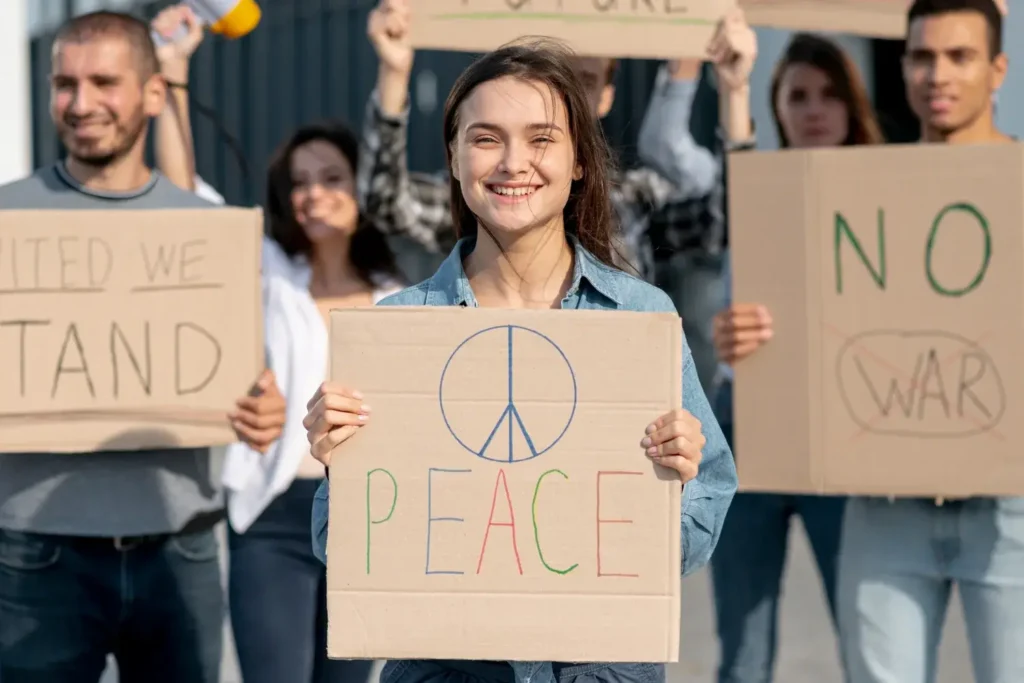
Human rights defenders are key in working with global organizations. They help spread their message far and wide. This teamwork gives activists the support they need to fight for human rights everywhere.
Important partnerships often include:
- United Nations Human Rights Council
- Amnesty International
- Human Rights Watch
- International Criminal Court
By teaming up with these groups, defenders get big benefits. They get:
- Stronger legal protection
- More visibility for their causes
- Access to funds from around the world
- Help with skills and training
Strategic networking helps defenders go beyond their local areas. They can work on bigger issues and make a difference in many places.
Good teamwork needs clear communication and shared goals. Defenders must work through complex systems while staying true to their mission.
“Collaboration is the cornerstone of effective human rights advocacy” – UN Human Rights Expert
For those wanting to make a big difference, teaming up with global organizations is a must. These partnerships give defenders the strength to tackle big injustices and bring about real change.
Challenges Faced by Human Rights Defenders
Human rights activists face tough situations in their work. They need a lot of courage and smart planning to stay safe and effective. Their mission is to protect human rights, but it’s not easy.
The world for human rights activists is full of challenges. These obstacles can make their job harder. It shows how dedicated they are to fighting for human rights worldwide.
Personal Safety and Security Issues
Activists often risk their own safety. They might face:
- Direct physical threats and intimidation
- Surveillance and monitoring by governmental agencies
- Potential imprisonment or legal persecution
- Social stigmatization and personal reputation damage
Legal and Political Obstacles
Activists also deal with legal and political hurdles:
| Challenge Type | Description | Impact |
|---|---|---|
| Restrictive Laws | Regulations limiting free speech | Reduced advocacy effectiveness |
| Government Opposition | Direct resistance to activist initiatives | Increased personal and professional risks |
| Judicial Constraints | Limited legal protection mechanisms | Reduced accountability for human rights violations |
Resource Limitations
Activists also face financial and operational challenges:
- Limited funding sources
- Inadequate technological infrastructure
- Restricted access to global communication networks
- Minimal organizational support
Despite these big challenges, human rights activists keep fighting for change. They show great resilience and unwavering dedication to human dignity.
Impact Assessment and Measuring Success
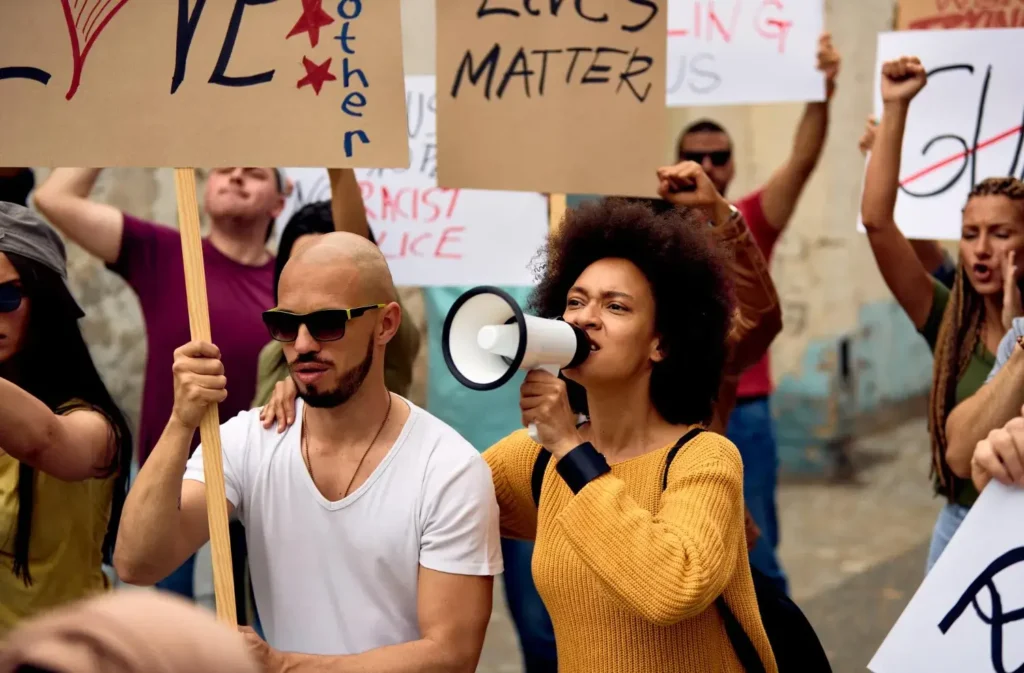
Figuring out if human rights work is effective is complex. Social justice advocates use many ways to see how well they’re doing. They aim to show real progress in tough social situations.
Success is measured in several key ways. These methods track both obvious and hidden results. They look at the big changes made by human rights efforts.
- Quantitative Impact Indicators
- Policy changes implemented
- Number of individuals directly supported
- Legal reforms achieved
- Qualitative Assessment Methods
- Community testimonials
- Narrative documentation
- Systemic change analysis
Real impact goes beyond quick wins. Transformative change needs long-term tracking and full evaluation. Advocates set up detailed monitoring systems. These systems track both quick wins and lasting changes in society.
New tools and research methods make measuring impact more accurate. Data visualization tools, surveys, and team research platforms help activists show their progress clearly.
“Impact is not just about numbers, but about meaningful, sustainable change in human experiences.” – Human Rights Research Institute
Knowing about these ways to assess impact helps support human rights work. It shows the deep, complex nature of social justice efforts.
Supporting Human Rights Organizations
Making a difference in human rights is all about getting involved and staying committed. Advocacy groups are key in fighting for social justice. Your help can really make a big difference, whether you want to change the world or help your local community.
Ways to Get Involved
There are many ways to help advocacy groups. Here are some effective ways to support human rights:
- Attend local community events and awareness programs
- Share information through social media platforms
- Sign petitions for critical human rights issues
- Participate in peaceful demonstrations
Donation and Funding Options
Money is essential for human rights work. Advocacy groups need donations to keep their programs going. Here are ways to help financially:
- One-time monetary gifts
- Monthly recurring donations
- Workplace giving programs
- Fundraising campaigns
Volunteer Opportunities
Using your skills and time can really help. Many advocacy groups need volunteers with different skills. Here are some volunteer roles:
- Research assistants
- Social media coordinators
- Translation services
- Event planning support
“Every individual has the power to create meaningful change through committed action.” – Human Rights Advocate
By joining advocacy groups, you join a worldwide effort. This effort is all about protecting human rights and fighting for social justice.
Future Trends in Human Rights Activism
The world of human rights is changing fast. New tech and global issues are pushing activists to find new ways to tackle big problems. They’re looking at new strategies to deal with issues that go beyond old ways.
New trends in human rights activism are changing how we fight for justice. Digital tools are helping to bring people together worldwide. They’re also raising awareness about important human rights issues.
- Climate justice campaigns
- Artificial intelligence ethics advocacy
- Economic inequality interventions
- Digital privacy protection
Technology is changing human rights movements in big ways. It’s making it easier to:
- Communicate with people all over the world
- Document human rights abuses right away
- Raise money for local projects
- Connect people across borders
| Emerging Focus Area | Key Strategies | Potential Impact |
|---|---|---|
| AI Ethics | Policy development | Preventing algorithmic discrimination |
| Climate Justice | Global awareness campaigns | Protecting vulnerable populations |
| Digital Rights | Online advocacy | Protecting personal data |
Your help is important in shaping the future of human rights. By staying up to date and supporting new advocacy, you can help make a difference.
“The future of human rights lies in our collective ability to adapt, connect, and respond to emerging global challenges.” – Global Human Rights Network
Conclusion
The journey of civil rights advocates shows a powerful story of change. You’ve seen how human rights activism works. It’s a field where people fight against unfair systems and bring about real change.
Grassroots activists are key to social justice. They use smart strategies to tackle big global problems. Their hard work shows that one person can make a big difference, inspiring others to fight for what’s right.
You now understand human rights work better. Every tactic, skill, and challenge shows how important these advocates are. They work in many ways, from online to local, to make our world fairer and more dignified.
Think about how you can help advance human rights. Every effort, big or small, can help. It supports the work of activists who are dedicated to making our world more just and welcoming to all.
FAQ
What exactly do human rights activists do?
Human rights activists fight for the rights and dignity of people and groups. They watch for rights abuses, push for policy changes, and raise awareness. They also support those who are marginalized and work for justice in areas like freedom and equality.
How can I become a human rights activist?
To become one, start by learning about human rights. Volunteer with groups that advocate for these rights. Join local movements and improve your communication and leadership skills.
Stay updated on global justice issues. Consider studying human rights, social sciences, or law to gain more knowledge.
What are the biggest challenges human rights defenders face?
Defenders face many challenges like safety risks and legal obstacles. They often have limited resources and face government harassment. In some places, speaking out can lead to imprisonment or harm.
How do digital platforms impact human rights activism?
Digital platforms have changed activism by providing tools for communication and organizing. Social media helps activists share violations, mobilize support, and create networks. It also helps them get around media restrictions.
Can individual actions really make a difference in human rights?
Yes, individual actions are key. Every effort, like signing petitions or supporting organizations, can lead to change. Many big movements started with small steps by dedicated individuals.
What skills are most important for human rights activists?
Important skills include good communication, critical thinking, and planning. Activists need to be culturally sensitive, resilient, and able to lead. They should also be good at networking, speak multiple languages, and empathize deeply.
Understanding laws, research skills, and documenting rights situations are also vital.
How do human rights organizations measure their impact?
Organizations measure impact by tracking policy changes and legal wins. They look at community improvements and monitor indicators. They also conduct assessments and gather testimonials to show their success.
What are the most critical human rights issues today?
Today’s key issues include racism, gender inequality, and refugee rights. There’s also discrimination against LGBTQ+ people, economic injustice, and climate change. Other issues include digital privacy, indigenous rights, healthcare access, and fighting human trafficking.

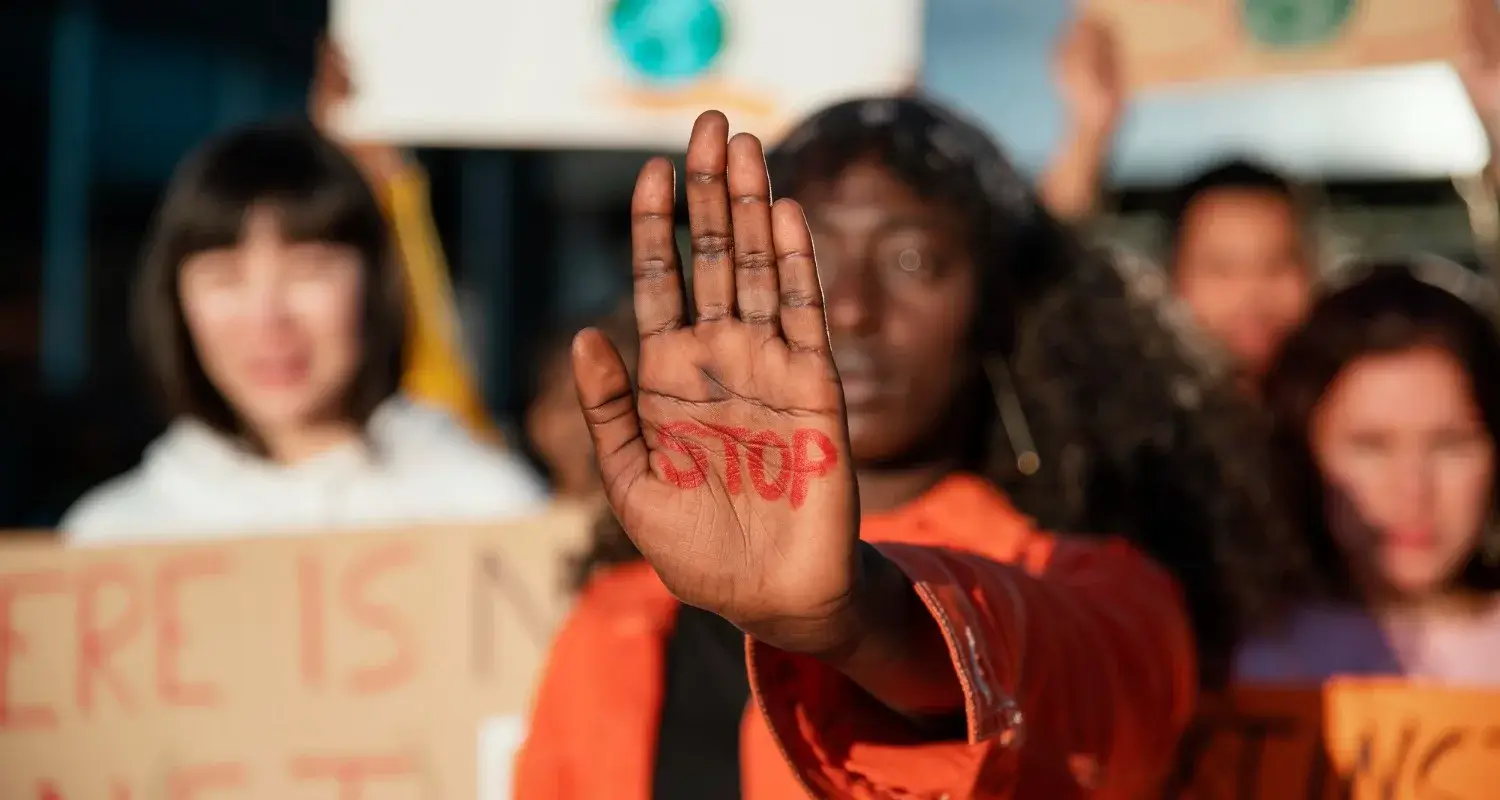







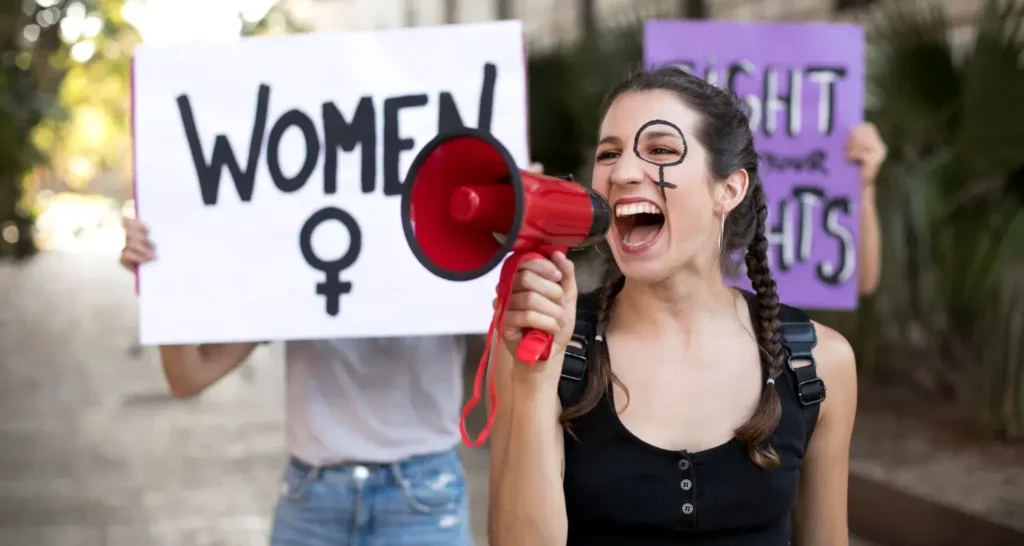
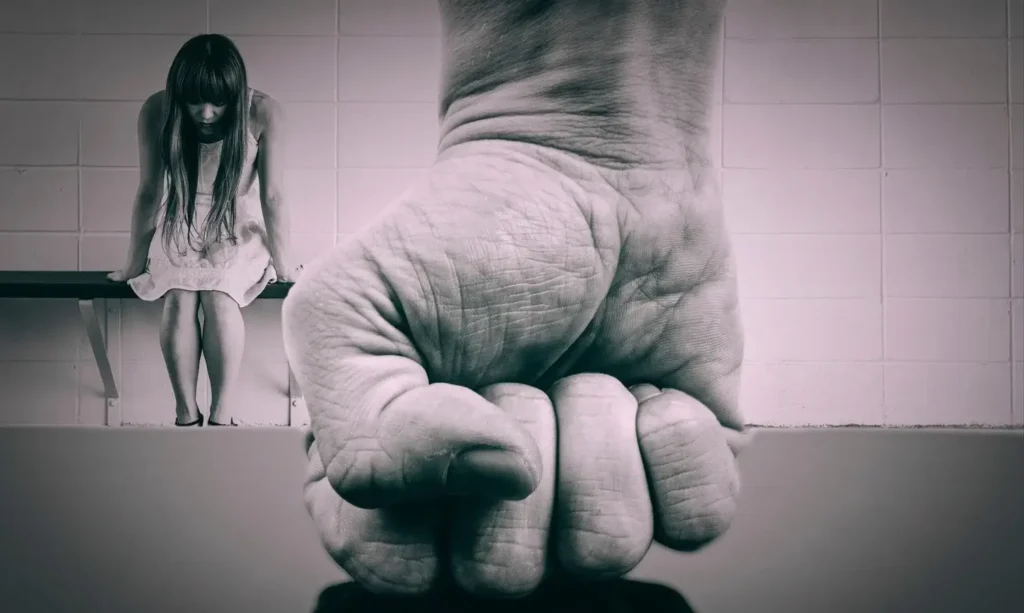
1 thought on “Human rights activists and their work”